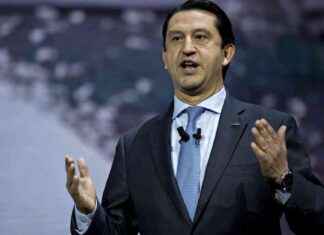Abraham Lincoln, George Washington and the two Roosevelts, Franklin and Theodore, have kept their lock on their positions as, respectively, the four best presidents in American history, according to a new ranking by 91 presidential historians.
Barack Obama took the No. 12 spot in his first time on the survey.
The poll, released on the eve of Presidents’ Day weekend, is the third one conducted by the wonky public-affairs cable network C-SPAN over the past 17 years.
The presidents in the bottom rankings were the same as in 2000 and in 2009.
They were Andrew Johnson, Franklin Pierce and James Buchanan, who again comes in dead last. Buchanan, who served from 1857 to 1861, is regarded as having been an inept and indifferent leader as the nation was headed toward civil war.
Yet there was also some movement in the rankings.
Andrew Jackson — whose style of populism that Donald Trump’s advisers like to cite as a model for the current president — slipped five spots since 2009, coming in at the 18th best president.
Dwight Eisenhower moved into the top five for the first time, moving up from No. 8 in 2009 and No. 9 in 2000.
George W. Bush also gained slightly in the esteem of the historians, moving up to 33rd in 2017, from 36th in 2009. But he was bested by his father, George H.W. Bush, who ranked 20th.
Bill Clinton, whose presidency was bookended by the two Bushes, remained in the 15th spot.
The survey asks historians to rank the presidents on a 1-to-10 scale on 10 qualities of leadership: public persuasion, crisis leadership, economic management, moral authority, international relations, administrative skills, relations with Congress, vision/setting an agenda, pursued equal justice for all and performance within the context of his time.
"Once again, the big three are Lincoln, Washington, and FDR — as it should be," said Rice University history professor Douglas Brinkley, one of the academic advisers to the study. "That Obama came in at No. 12 his first time out is quite impressive."
However, Edna Greene Medford of Howard University, another adviser, said she would have expected Obama to rank higher, given his high approval ratings when he left office in January, that his administration had been close to scandal-free and his role in steering the economy back from the brink after the financial crisis.
"Of course," she added, "historians prefer to view the past from a distance, and only time will reveal his legacy."
Overall, the period from 1933 to 1969 was "the golden age of the American presidency," said historian and biographer Richard Norton Smith.
Five presidents from that period made it into the top 10. They were led by Franklin D. Roosevelt, who is regarded as "not only the first modern president but the man who, in reinventing the office, also established the criteria by which we judge our leaders," Smith added.
The other mid-20th century presidents in the top 10 were Eisenhower, Harry S Truman, John F. Kennedy, Ronald Reagan and Lyndon B. Johnson.
If that time was the apex, the period between 1837 and 1869 might be regarded as the most dismal era for the presidency, with No. 1-ranked Lincoln being a stark exception. Eight of the 10 lowest-rated presidents served during that period leading up to and after the Civil War.
Our editors found this article on this site using Google and regenerated it for our readers.





